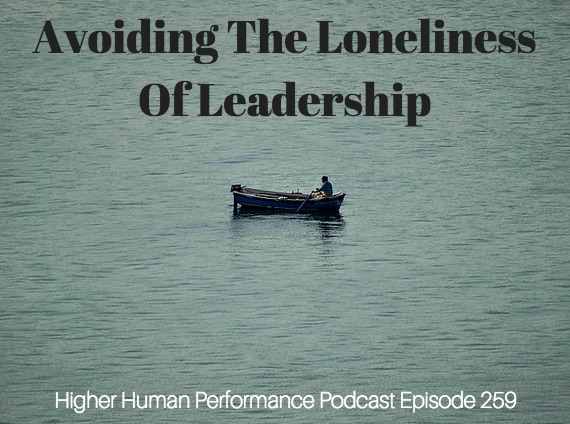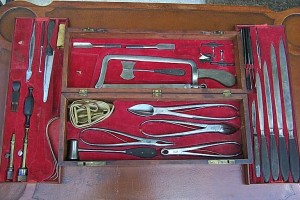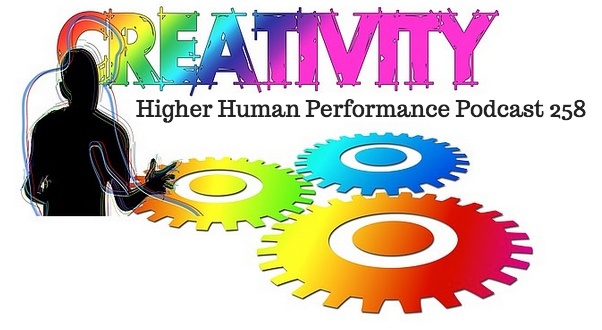Podcast: Play in new window | Download ()
Subscribe: Apple Podcasts | Spotify | | More

There you sit. Alone. Pondering the problems of the day. And the week. To say nothing of the quarterly performance worries.
Your organization’s performance hinges on lots of people. You stare at the ceiling tiles in your office and think of the various functions in your organization. Finance. Marketing. HR. Operations. Sales. Most days you never stop to think about all the moving parts and how they have to work almost perfectly to get it all done. But today isn’t one of those days. It’s one of THOSE days. A lonely at the top day.
Your gut is telling you all the right stuff, but that’s only because you remember being a young leader who made the mistake of sharing too much. Sharing the strains of your leadership with your direct reports — that’s a mistake you know all too well because you used to do it until an older, wiser head warned you about how destructive that could be to your people. You can still remember the day when he confronted you about it. “It’s not fair to them,” he said. You hadn’t considered that until he taught you. You felt better venting to them, but he was absolutely right…it wasn’t fair to them. It was just one of the many leadership lessons you had to learn. He told you it was “leadership courage” because it meant doing the hard things that would best serve your people.
But right now, sitting alone in your office, you’re sure wishing there were an easier way. Some way you could bring in a few of your most trusted people and just spill your guts about these worries. But you don’t. And that makes you feel even more lonely.
Part of you feels like a hypocrite because you’re constantly preaching teamwork. Just the other day you called in one of your top leaders who has 3 very capable direct reports. She was trying to pull all the weight alone and you had to coach her to “lean on your people and give them an opportunity.” Now, part of you is feeling like maybe you’re making the same mistake — but that’s your emotional heart talking in your ear and you know it’s different for you. This time.
Some problems are “rally the troops” problems. Not this one. This is one of those play your cards close to your vest kind of problems. Your head is telling you the right thing – keep this to yourself and figure it out. It’s the loneliness of being at the top. With the authority, power and prestige comes lots of loneliness. You signed on for it though so there’s no time to feel sorry for yourself.
But the weight is still there. Hovering on top of your shoulders like a bar bell filled with weights.
How do leaders handle the stress of this kind of loneliness? Like the punchline to a joke…I could say, “Very carefully.” But, there are some more serious answers to consider.
These answers can serve to help any lonely leader better cope with the stress and understand why loneliness is sometimes ideal for your work.
Okay, the title of today’s episode might be slightly misleading, but I didn’t intend it that way. It’s not really about avoiding the loneliness of leadership. It’s more about the realities of loneliness and why you should embrace them.
It’s Good For Your People
You want to be among the very best leaders, right? Of course you do. Leaders come in a variety of positions. There are team leaders, executives, supervisors and all sorts in between. Some have many direct reports. Some have one. None of that matters because it’s still lonely at the top of the leadership ladder. Whoever you are, whomever you serve — you want to be a high performer.
High performance leaders always serve their people. Decisions are made to maintain the healthiest organization possible. It doesn’t mean great leaders serve the individual, personal best interests of every single person because they can’t. Sometimes the best decision is to eliminate a position. You can’t hang your hat on that decision being the best for the person who holds that position because it’s not. But if it’s the best thing for the organization and the overall performance, then you have to do it. Those are difficult decisions that a great leader will make even in the face of knowing they’re putting somebody out of work. However, the great leader will still try to serve that soon-to-be displaced employee.
I’ve terminated managers before and in the process dug more deeply into ways I can help him land on their feet. It’s not because I’m altruistic. It’s because it’s just the right thing to do when you can.
The courage required to face down your fears is B-I-G. Make no mistake about it. Loneliness is a fear. It’ll suck you down the road of over-sharing if you let it. You’ve got to have courage to refuse the urge because it’s unfair to your people to burden them with something beyond their ability to handle. You’ll over share if you stop thinking of them though, and keep all the attention on poor, pitiful YOU.
I’m not talking about keeping your people in the dark about things they should know, or things they can help you with. I’m talking about things that you might share with them followed by, “…but that’s not your problem…I’m going to have to figure this out.” Too many leaders utter those words to their people. Far too many keep on uttering them. Why weigh down your people with something they can’t possibly help you with, and something that might only serve to distract them from their work? Or make them worry unnecessarily?
It’s not about nobility. It’s about service. Serving your organization. Serving your people. Protecting your people. Your leadership role is no different than the motto used by police all over the nation – To Protect And Serve.
It’s Good For The Process Of Improving
Improvement often stems from thoughtful consideration. In spite of all the hoopla on collaboration there’s a time when sitting alone in quiet contemplation works. Too often leaders are rushed from one meeting to another, from one text message to the next and from one conversation into another one. Every leader I know complains about not having enough margin in their life. Some want more white space on their calendar to coach their rising stars. Others want more margin so they can better prepare for the most important meetings. Still others want the white space so they can just “mange by walking around.”
Loneliness is represented by the white space on your calendar. It may not be utilized with quiet though — and that’s a mistake. You’re not embracing the loneliness of leadership if you sit alone in your office plugged into every web-based group think vehicle available. Twitter. Facebook. Reddit. Mashable. Business Insider. Pick your poison. It really doesn’t matter. Blogs, social media networks, aggregators and even podcasts take away your margin. They diminish your loneliness, which is why we all rush to them when we’re alone. Fearful we’ll miss something…we plug into the rest of the world and tune out our own thoughts and feelings.
Even people who claim to enjoy being alone (and I count myself among them), admit they’re not rarely quietly alone. As I type this I’m sitting inside The Yellow Studio. The radio is on a local sports talk radio station talking about the Cowboys running back DeMarco Murray going to Philadelphia. The flat panel TV is on – with the sound down – tuned to ESPN where there’s lots of talk about Murray going to Philadelphia. Over on the monitor to my right is a Tweeter client showing at least 4 columns of various content. Apple iTunes is open to my music library and I’ve got a pair headphones on my left ear only listening to some Hayes Carll tunes. And like Eric Carmen, I could sing, “All by myself…” You can relate. Sometimes it’s noisiest when we’re alone!
Okay, I’ve now turned off the TV. I’ve shut down iTunes. Sports talk radio is still playing ’cause I’m afraid I’ll miss the official announcement about Murray leaving Dallas. Now, prepare yourself for the real shocker that will prove how crazy we can all behave. I honestly don’t care one bit who Murray plays for next year. Sure, I’m a fan of the Dallas Cowboys, but only because I live here. I’m an Oklahoma Sooner football fan – where Murray played – and I still don’t care. But something in my brain compels me to listen for fear the news announcement will come and I won’t hear it in real time.
Don’t laugh. You do the same thing. We busy ourselves even when we have white space on our calendar. We say we want to do this or that – and the this or that is always something valuable or profitable – but when we have time, we avoid doing it. Instead, we do something less important, or less urgent. If you don’t do this, then keep it to yourself ’cause you’re more special than the rest of us. We battle these things. And thanks to Apple and other technology companies we’re losing the battle. I’m talking to you, iPhone. And you, too, iPad. And you, iTunes. All you “I” things are making me take my EYE off the more important things, sometimes.
Okay, I’ve shut down the radio. It’s all quiet now. And just like that, I find myself now with my thoughts. And this keyboard. And this post – this podcast. I’m suddenly thinking more seriously about the value loneliness can play in leadership IF it’s properly applied. And if we’ll stop to think of it for what it can do to serve us better.
Find what works for you. But make it quiet physically and mentally. I’ll share with you some things have worked for me through the years.
1. Turn the lights down. Or off. I don’t mean complete darkness, but turn off those florescent overhead lights. Pull down the shades over your windows. Turn on a lamp.
That warmer light helps quieten my mind down. And it happens pretty quickly for me, likely the result of years of practice.
2. Turn off anything that makes noise. I’m fond of white noise. When I sleep, I’ve got to have it. But when I’m embracing leadership loneliness, no noise is best. Even a ticking clock will drive me batty. Nothing will bring out a hammer faster than a ticking clock. I will beat a noisy clock to death quicker than you can say, New York second.”
3. Look up. I can’t explain it, but there’s a distinct difference in my mental state when I look down on the desk versus when I look up at the ceiling or toward the ceiling. Weird, huh? I know, but maybe life is metaphorically telling me something when I look up. When you’re facing a problem, or a challenge, or a decision – you want things to look up. So you may as well get things started by doing it yourself.
You’ve got to figure out what works best for you, but I can tell you right now — whatever you’ve been trying has probably not worked well for you. Not unless you’ve given some concerted effort to embracing being alone with your thoughts.
 We form habits that work for us on some level, but foil our improvement in others. One of my more recent favorite books is entitled, Daily Rituals: How Artists Work by Mason Curry. The book chronicles the daily habits of creatives from the past and present. It’s done sort of in catalog fashion listing the person, followed by a page or two of how they went about their daily business. I find myself picking it up pretty regularly to just open a page and read of a few different people. The interesting thing you quickly find is that there’s not a single way to creativity. Nor is there a single path to being productive or being an effective leader. You have to not only find out what works for you, but you have to find out what works for your organization — because as a leader, your work impacts many other people.
We form habits that work for us on some level, but foil our improvement in others. One of my more recent favorite books is entitled, Daily Rituals: How Artists Work by Mason Curry. The book chronicles the daily habits of creatives from the past and present. It’s done sort of in catalog fashion listing the person, followed by a page or two of how they went about their daily business. I find myself picking it up pretty regularly to just open a page and read of a few different people. The interesting thing you quickly find is that there’s not a single way to creativity. Nor is there a single path to being productive or being an effective leader. You have to not only find out what works for you, but you have to find out what works for your organization — because as a leader, your work impacts many other people.
Thinking time matters. And that’s the point. Drawing on your past experiences, your convictions, your philosophy and your intuition can flow more easily if you’re not looking outside yourself for every answer. There comes a time in every leader’s life – perhaps many times every week – when we just need time to think about our best course of action. Don’t rob yourself of that value found in loneliness.
It’s Good For Your Well Being
Let’s be selfish for a minute. Being alone is good for you. With all the demands on your time and with everybody tugging at you, it’s good to embrace the selfishness of being lonely, sometimes.
When I was a 25-year-old General Manager I was running a subsidiary of a larger company. The CEO of the parent company was about 10 years older and I really liked working for him. One day I was at the company’s headquarters (a different location than my offices). I was visiting with some folks in accounting and other people. I swung by the CEO’s office to stick my head in. The door was open, the lights were off. It was completely dark. I peeked in and say, “Dan?” He wheeled his chair around facing the doorway and I could see he was sitting there in complete darkness. I noticed a letter opener in his hand. I asked, “What you doing sitting in the dark?” He answered, “I’m contemplating suicide with this letter opener.” And we both laughed. I had caught my boss in a moment of loneliness. Leadership loneliness with a letter opener. A few years later Dan was killed in a car accident. It was a long time ago, but today I think of Dan every time I pick up a letter opener. A CEO sitting in the dark embracing a moment of loneliness.
You need time to exhale. Or inhale. Preferably both. It’s good for you to disconnect and just let your mind float to wherever it needs to go. Even before my days with Dan I had grown fond of using darkness. For as long as I can remember I’ve never used the overhead lighting in an office. I’m a fan of lamps. With bulbs that have a warm color temperature.
Good music and headphones plus darkness. That’s my personal recipe. You can mix up your own, but it’s important to go somewhere else in your mind. It’s a brain vacation without mind impairment. There’s a reason so many leaders, especially hard charging ones, are attracted to alcohol and drugs. The tension, stress and pressure of leadership must be released. Find a profitable, non-destructive outlet. I’m advising you to find moments while you’re at work. Sometimes 10 minutes is long enough. Sometimes you need an hour. Or two. Do it and don’t feel badly about it. Do it for yourself.
It’s lonely at the top. It’s necessarily lonely because the buck stops with you. It’s also lonely because as the head of your organization you’re driving. Only one person can drive. It’s the responsibility of the driver to get everybody to the destination safely.
Sometimes you want to roll down the road with ZZ TOP blaring through the sound system. Other times you want everybody to just shut up. The driver needs what the driver needs in order to navigate safely and successfully.
Embrace the tools of loneliness and you’ll be a more effective leader.




 To subscribe, please use the links below:
To subscribe, please use the links below:






 Innovation in the workplace has been a hot topic during my entire career. It accelerated when the digital age arrived, but it was present long before that. Some of us are old enough to remember a time when our businesses operated with manual, handwritten spreadsheets, telephones and postal service mail. Facsimile machines arrived and suddenly communication got faster. Computers arrived and with it a piece of software called VisiCalc, the first electronic spreadsheet. That made every act of accounting – including inventory control and payroll – faster!
Innovation in the workplace has been a hot topic during my entire career. It accelerated when the digital age arrived, but it was present long before that. Some of us are old enough to remember a time when our businesses operated with manual, handwritten spreadsheets, telephones and postal service mail. Facsimile machines arrived and suddenly communication got faster. Computers arrived and with it a piece of software called VisiCalc, the first electronic spreadsheet. That made every act of accounting – including inventory control and payroll – faster!


 We form habits that work for us on some level, but foil our improvement in others. One of my more recent favorite books is entitled,
We form habits that work for us on some level, but foil our improvement in others. One of my more recent favorite books is entitled, 

 There was also creativity in the presentation of the music. It started the moment I removed the vinyl from the album sleeve. I never touched anything other the very edges of the album with my outstretched palms or fingertips. Yes, it had technical merits of keeping the oil of your skin off the vinyl, but it also showed the average shopper who likely didn’t handle their vinyl properly…how to do it right! It was part presentation, part education.
There was also creativity in the presentation of the music. It started the moment I removed the vinyl from the album sleeve. I never touched anything other the very edges of the album with my outstretched palms or fingertips. Yes, it had technical merits of keeping the oil of your skin off the vinyl, but it also showed the average shopper who likely didn’t handle their vinyl properly…how to do it right! It was part presentation, part education.